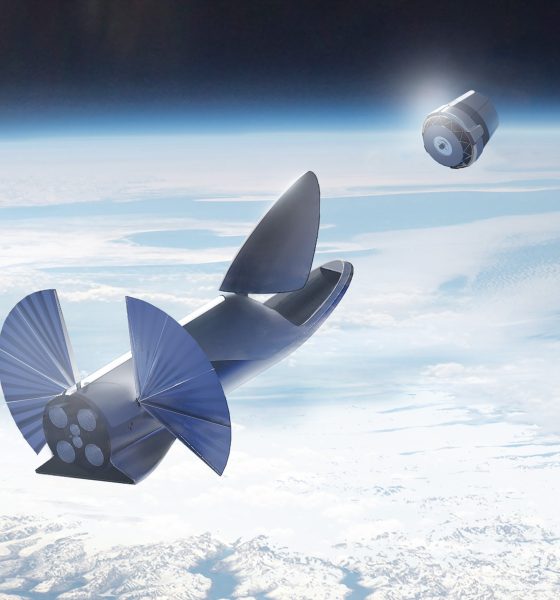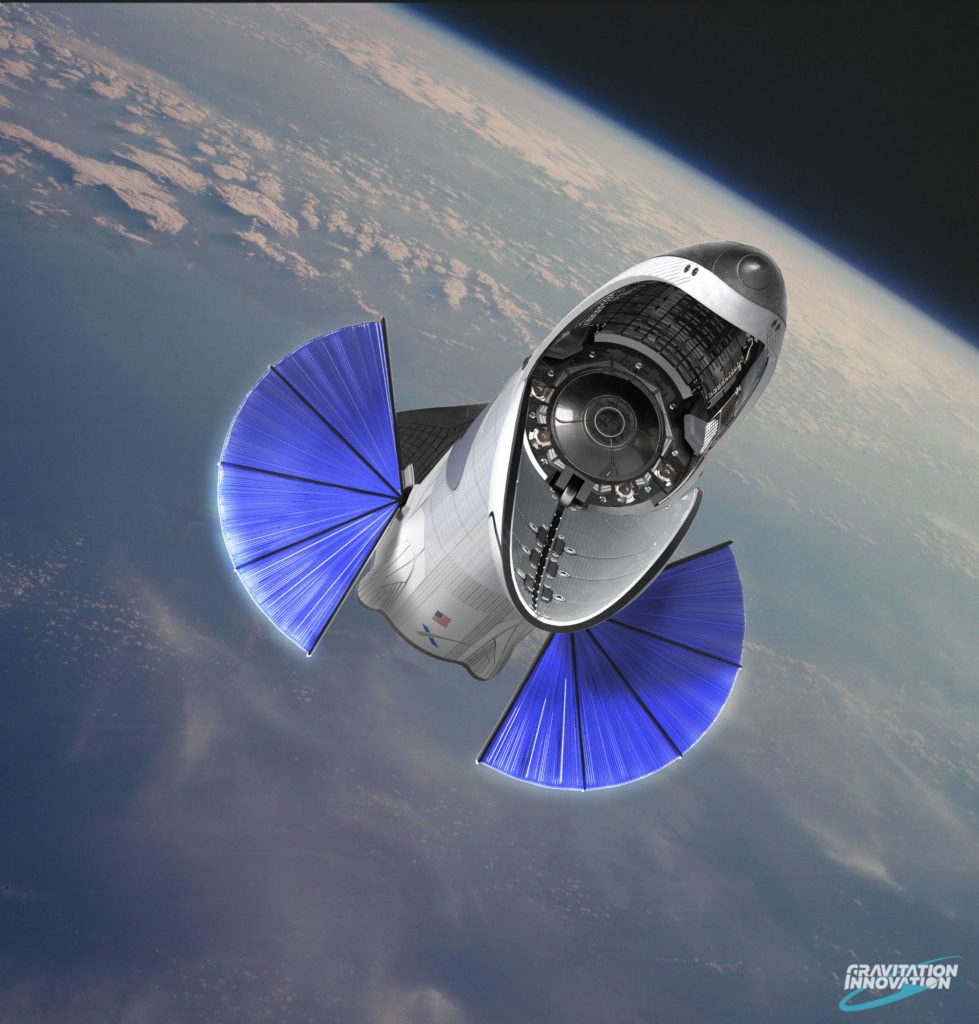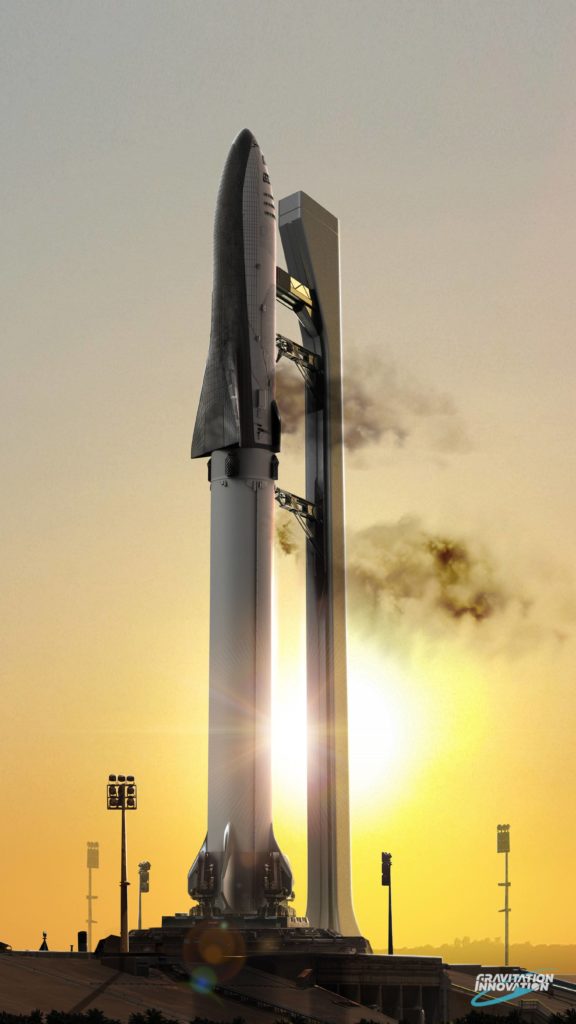

News
NASA funds study on SpaceX BFR as option for massive space telescope launch
Speaking at the Exoplanets II conference in Cambridge, UK July 6th, geophysicist and exoplanet hunter Dr. Debra Fischer briefly revealed that NASA had funded a study that would examine SpaceX’s next-gen BFR rocket as an option for launching LUVOIR, a massive space telescope expected to take the reigns of exoplanet research in the 2030s.
Conceptualized to follow in the footsteps of NASA’s current space telescope expertise and (hopefully) to learn from the many various mistakes made by their contractors, the LUVOIR (shorthand for Large UV/Optical/IR Surveyor) concept is currently grouped into two different categories, A and B. A is a full-scale, uncompromised telescope with an unfathomably vast 15-meter primary mirror and a sunshade with an area anywhere from 5000 to 20000 square meters (1-4 acres). B is a comparatively watered-down take on the broadband surveyor telescope, with a much smaller 8-meter primary mirror, likely accompanied by a similarly reduced sunshade (and price tag, presumably).
Debra Fischer: NASA is funding study on launching LUVOIR with SpaceX's BFR.
Primary option still SLS Block 2, but if it isn't ready there are private sector alternatives.#Exoplanets2
— Ryan MacDonald (@MartianColonist) July 6, 2018
Remember, this is a space telescope that would need to fit into the payload fairing of a rocket, survive the launch into orbit, and then journey nearly one million miles from Earth to its final operational destination, all before deploying a mirror and starshade as large or larger than Mr Steven’s SpaceX fairing recovery net. The James Webb Space Telescope (JWST), a rough successor to Hubble with a 6.5-meter primary mirror, is the only space telescope even remotely comparable to LUVOIR, and it has yet to launch after suffering a full decade of delays and almost inconceivable budget overruns. All we can do is hope that Northrop Grumman (primary contractor for JWST) is kept away from future giant space telescopes like LUVOIR.

LUVOIR A is pictured here with a 15-meter mirror and absolutely vast sunshade, roughly 80-100m long. (NASA)
The rocket problem
Nevertheless, the sheer scale of LUVOIR brings us back to an existential problem faced by all space telescopes – how to get into space in the first place. In this case, JWST offers a small taste of what launching such a large telescope requires, although it only truly applies the 8m LUVOIR B. The reason LUVOIR’s conceptual design was split into two sizes is specifically tied to the question of launch, with LUVOIR B’s 8m size cap dictated by the ~5 meter-diameter payload fairings prevalent and readily available in today’s launch industry.
https://twitter.com/Shamrocketeer/status/821799890942652417
LUVOIR A’s 15-meter mirror, however, would require an equally massive payload fairing. At least at the start, LUVOIR A was conceptualized with NASA’s Space Launch System (SLS) Block 2 as the launch vehicle, a similarly conceptual vehicle baselined with a truly massive 8.4 or 10-meter diameter payload fairing, much larger than anything flown to this day. However, the utterly unimpressive schedule performance of the SLS Block 1 development – let alone Block 1B or 2 – has undoubtedly sown more than a little doubt over the expectation of its availability for launching LUVOIR and other huge spacecraft. As a result, NASA has reportedly funded the exploration of alternative launch vehicles for the A version of LUVOIR – SpaceX’s Cargo BFR variant, in this case.
While only a maximum of 9 meters in diameter, the baselined cargo spaceship’s (BFS Cargo) payload bay has been estimated to have a usable volume of approximately 1500 cubic meters, comparing favorably to SLS’ 8.4 and 10-meter fairings with ~1000 to ~1700 cubic meters. The more traditional SLS fairing may offer more flexibility for minimizing complex deployment mechanisms for large telescopes (a sore spot for JWST), but SLS Block 2 is almost entirely up in the air at the moment, and liable to cost $5-10 billion alone to develop even after SLS Block 1 is flying (NET mid-2020). On the other hand, barring abject and total failure, SpaceX’s BFR rocket and spaceship could have many, many launches under its belt and a proven track record of reliability, whereas SLS Block 2 is unlikely to fly more than a handful of times ever, even if it gets built.
- NASA/Boeing’s SLS overview, showing the different Blocks planned. Currently Block 1’s first launch is NET mid-2020, while future variants are likely years away from launch. (NASA)
- The cargo version of the BFS (Big F- Spaceship) rendered by David Romax, including a number of educated guesses at what it might look like and how it might function. At the request of a friend, artist David Romax put together a truly jaw-dropping collection of concept art featuring SpaceX’s BFR rocket and its Cargo and Crew spaceships. (Gravitation Innovation/David Romax)
- BFR prepares for launch as the sun sets over the upgraded LC-39A, built off a concept of the future modifications included in SpaceX’s 2016 and 2017 video updates. At the request of a friend, artist David Romax put together a truly jaw-dropping collection of concept art featuring SpaceX’s BFR rocket and its Cargo and Crew spaceships. (Gravitation Innovation/David Romax)
With any luck, the results of the LUVOIR SpaceX BFR launch analysis will make their way into the public sphere once the study is completed, perhaps revealing a few tidbits about the capabilities of the next-generation composite rocket. Another astrophysicist familiar with the project also noted that Blue Origin was firmly in the running of similar conceptual launch studies, hinting at a potential competition for commercial launches of each company’s massive future rockets.
Follow us for live updates, peeks behind the scenes, and photos from Teslarati’s East and West Coast photographers.
Teslarati – Instagram – Twitter
Tom Cross – Twitter
Pauline Acalin – Twitter
Eric Ralph – Twitter

Elon Musk
SpaceX issues statement on Starship V3 Booster 18 anomaly
The incident unfolded during gas-system pressure testing at the company’s Massey facility in Starbase, Texas.

SpaceX has issued an initial statement about Starship Booster 18’s anomaly early Friday. The incident unfolded during gas-system pressure testing at the company’s Massey facility in Starbase, Texas.
SpaceX’s initial comment
As per SpaceX in a post on its official account on social media platform X, Booster 18 was undergoing gas system pressure tests when the anomaly happened. Despite the nature of the incident, the company emphasized that no propellant was loaded, no engines were installed, and personnel were kept at a safe distance from the booster, resulting in zero injuries.
“Booster 18 suffered an anomaly during gas system pressure testing that we were conducting in advance of structural proof testing. No propellant was on the vehicle, and engines were not yet installed. The teams need time to investigate before we are confident of the cause. No one was injured as we maintain a safe distance for personnel during this type of testing. The site remains clear and we are working plans to safely reenter the site,” SpaceX wrote in its post on X.
Incident and aftermath
Livestream footage from LabPadre showed Booster 18’s lower half crumpling around the liquid oxygen tank area at approximately 4:04 a.m. CT. Subsequent images posted by on-site observers revealed extensive deformation across the booster’s lower structure. Needless to say, spaceflight observers have noted that Booster 18 would likely be a complete loss due to its anomaly.
Booster 18 had rolled out only a day earlier and was one of the first vehicles in the Starship V3 program. The V3 series incorporates structural reinforcements and reliability upgrades intended to prepare Starship for rapid-reuse testing and eventual tower-catch operations. Elon Musk has been optimistic about Starship V3, previously noting on X that the spacecraft might be able to complete initial missions to Mars.
Investor's Corner
Tesla analyst maintains $500 PT, says FSD drives better than humans now
The team also met with Tesla leaders for more than an hour to discuss autonomy, chip development, and upcoming deployment plans.

Tesla (NASDAQ:TSLA) received fresh support from Piper Sandler this week after analysts toured the Fremont Factory and tested the company’s latest Full Self-Driving software. The firm reaffirmed its $500 price target, stating that FSD V14 delivered a notably smooth robotaxi demonstration and may already perform at levels comparable to, if not better than, average human drivers.
The team also met with Tesla leaders for more than an hour to discuss autonomy, chip development, and upcoming deployment plans.
Analysts highlight autonomy progress
During more than 75 minutes of focused discussions, analysts reportedly focused on FSD v14’s updates. Piper Sandler’s team pointed to meaningful strides in perception, object handling, and overall ride smoothness during the robotaxi demo.
The visit also included discussions on updates to Tesla’s in-house chip initiatives, its Optimus program, and the growth of the company’s battery storage business. Analysts noted that Tesla continues refining cost structures and capital expenditure expectations, which are key elements in future margin recovery, as noted in a Yahoo Finance report.
Analyst Alexander Potter noted that “we think FSD is a truly impressive product that is (probably) already better at driving than the average American.” This conclusion was strengthened by what he described as a “flawless robotaxi ride to the hotel.”
Street targets diverge on TSLA
While Piper Sandler stands by its $500 target, it is not the highest estimate on the Street. Wedbush, for one, has a $600 per share price target for TSLA stock.
Other institutions have also weighed in on TSLA stock as of late. HSBC reiterated a Reduce rating with a $131 target, citing a gap between earnings fundamentals and the company’s market value. By contrast, TD Cowen maintained a Buy rating and a $509 target, pointing to strong autonomous driving demonstrations in Austin and the pace of software-driven improvements.
Stifel analysts also lifted their price target for Tesla to $508 per share over the company’s ongoing robotaxi and FSD programs.
Elon Musk
SpaceX Starship Version 3 booster crumples in early testing
Photos of the incident’s aftermath suggest that Booster 18 will likely be retired.

SpaceX’s new Starship first-stage booster, Booster 18, suffered major damage early Friday during its first round of testing in Starbase, Texas, just one day after rolling out of the factory.
Based on videos of the incident, the lower section of the rocket booster appeared to crumple during a pressurization test. Photos of the incident’s aftermath suggest that Booster 18 will likely be retired.
Booster test failure
SpaceX began structural and propellant-system verification tests on Booster 18 Thursday night at the Massey’s Test Site, only a few miles from Starbase’s production facilities, as noted in an Ars Technica report. At 4:04 a.m. CT on Friday, a livestream from LabPadre Space captured the booster’s lower half experiencing a sudden destructive event around its liquid oxygen tank section. Post-incident images, shared on X by @StarshipGazer, showed notable deformation in the booster’s lower structure.
Neither SpaceX nor Elon Musk had commented as of Friday morning, but the vehicle’s condition suggests it is likely a complete loss. This is quite unfortunate, as Booster 18 is already part of the Starship V3 program, which includes design fixes and upgrades intended to improve reliability. While SpaceX maintains a rather rapid Starship production line in Starbase, Booster 18 was generally expected to validate the improvements implemented in the V3 program.
Tight deadlines
SpaceX needs Starship boosters and upper stages to begin demonstrating rapid reuse, tower catches, and early operational Starlink missions over the next two years. More critically, NASA’s Artemis program depends on an on-orbit refueling test in the second half of 2026, a requirement for the vehicle’s expected crewed lunar landing around 2028.
While SpaceX is known for diagnosing failures quickly and returning to testing at unmatched speed, losing the newest-generation booster at the very start of its campaign highlights the immense challenge involved in scaling Starship into a reliable, high-cadence launch system. SpaceX, however, is known for getting things done quickly, so it would not be a surprise if the company manages to figure out what happened to Booster 18 in the near future.











